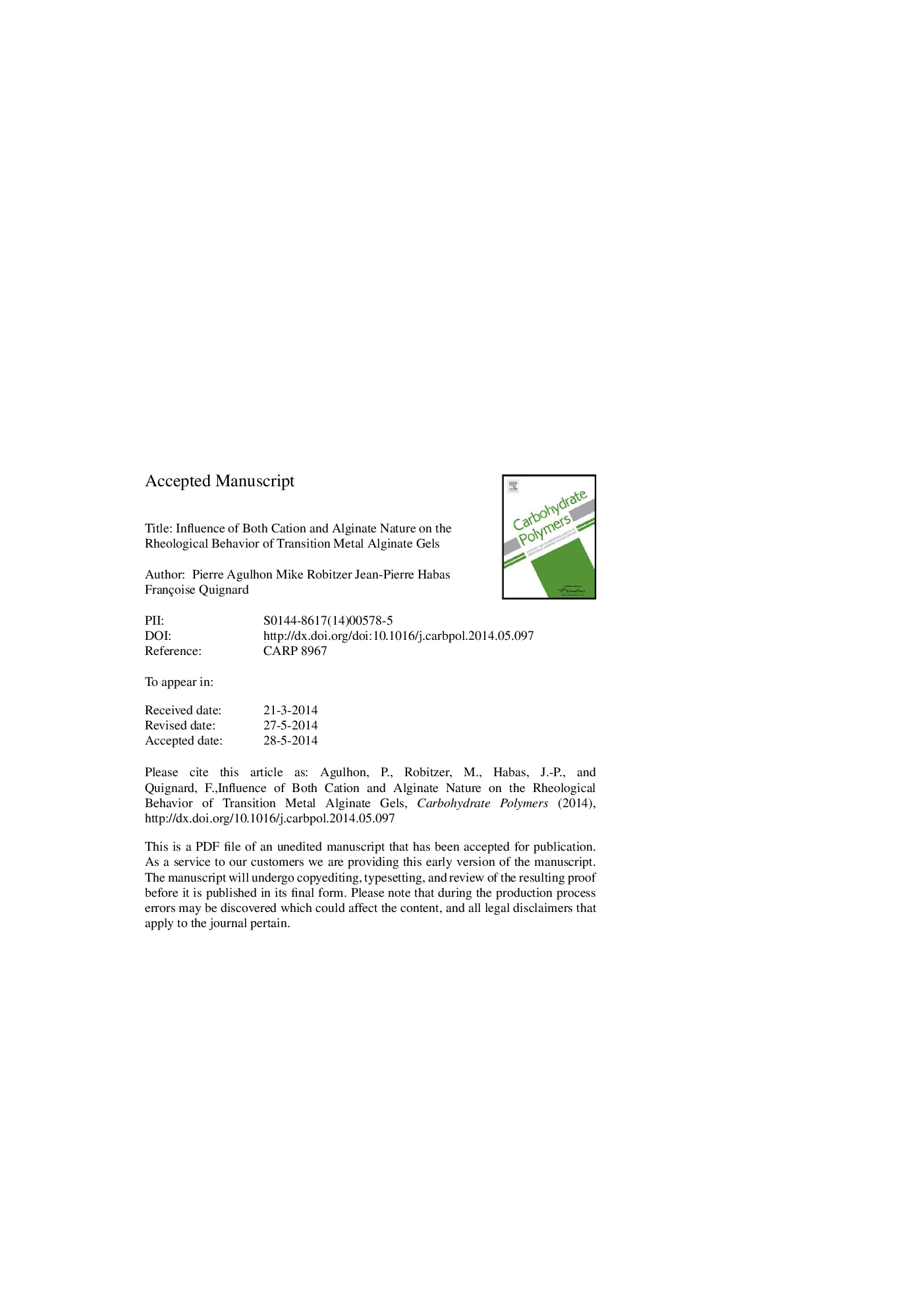| Article ID | Journal | Published Year | Pages | File Type |
|---|---|---|---|---|
| 7791497 | Carbohydrate Polymers | 2014 | 26 Pages |
Abstract
The rheological properties of several ionotropic alginate hydrogels were investigated according to the nature of the divalent cation (Mn2+, Co2+, Cu2+) and the guluronic fraction of the alginate (HG and LG for “high G-content” and “low G-content”). Six hydrogels (Mn-LG, Mn-HG, Co-LG, Co-HG, Cu-LG and Cu-HG) were synthesized and studied by spectromechanical analyses. On one hand, Cu-HG, Cu-LG and Co-HG behaved as viscoelastic solids: the elastic contribution was higher than the dissipative component in all the frequency range studied (Gâ²Â > Gâ³). No flow zone (Gâ³Â > Gâ²) was detected even at very low values of the shearing frequency. On the other, Mn-HG, Mn-LG and Co-LG presented a spectromechanical behavior that resembled that observed classically for entangled polymers. Indeed, at high frequency, these latter materials could be compared to a viscoelastic solid but at low frequency, the flow zone was described and the viscous character became prevalent with finite relaxation time. Very good correlations with the microscopic structurations of the network were evidenced (rubbery vs. flow zone and fibrillar vs. complex morphology respectively).
Related Topics
Physical Sciences and Engineering
Chemistry
Organic Chemistry
Authors
Pierre Agulhon, Mike Robitzer, Jean-Pierre Habas, Françoise Quignard,
